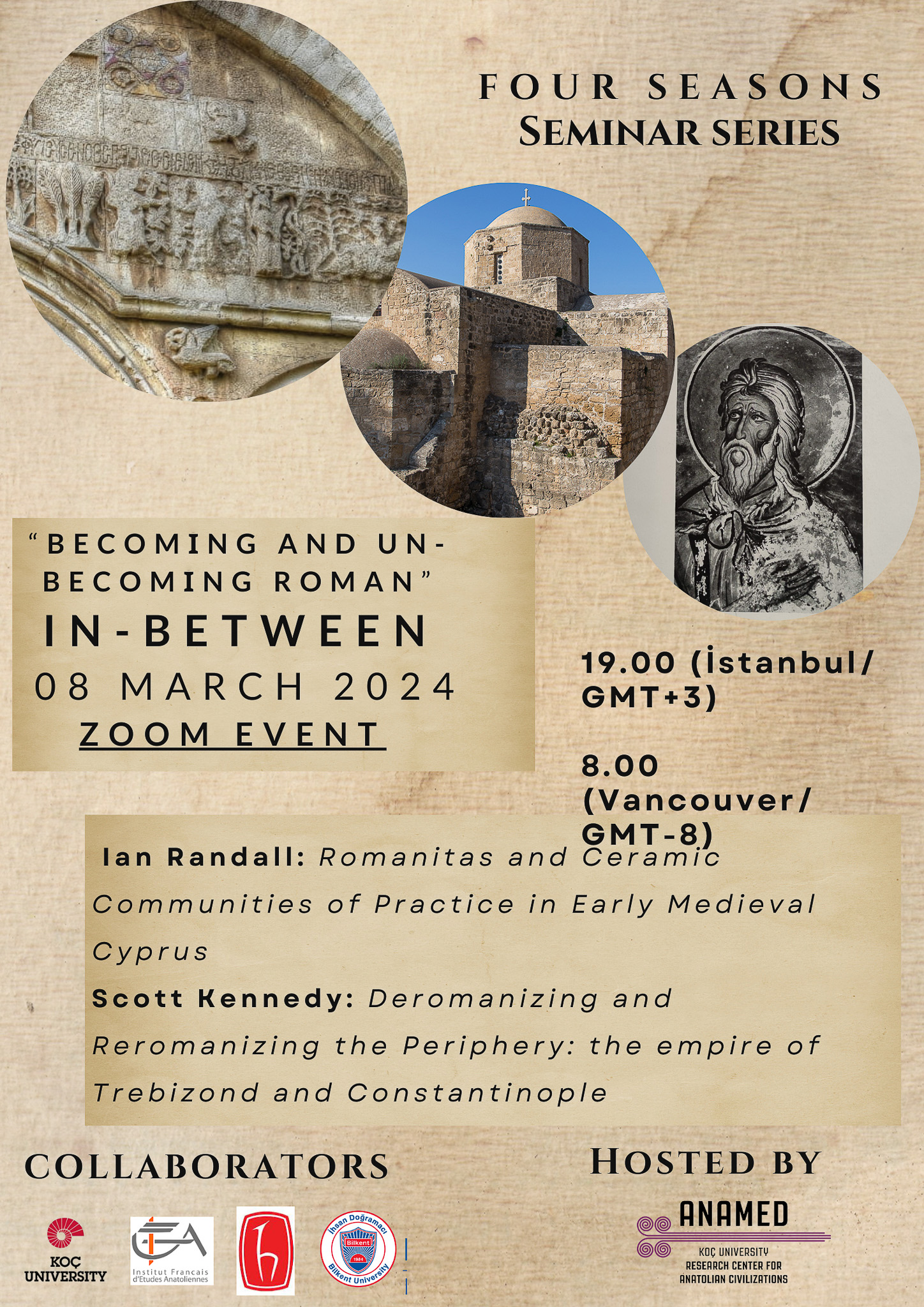
For well over a decade now, Byzantine scholars have sought to answer thorny questions of the Byzantines’ identity, discussing how their art, literature, and material culture reflected it or how that identity permeated after Byzantium. They have debated whether Byzantines were Greeks, Romans, or something else. Central to these discussions is the nature of the Byzantine Empire: was it a proto-nation state bound by Romanness or an empire held together by elite images of identity projected onto heterogeneous ethnicities? Were the Byzantines part of a larger Christian commonwealth? As we come to accept that Byzantines are generally identified as Romans, new questions continue to emerge. Should we replace artificial terms such as “Byzantium” and “Byzantine” with “Rome” and “Roman?” When and how does that Romanness stop? What social factors lead Romans to deny Romanness to others? What does the process of de-Romanization look like in the literary and material domains (sharp breaks or continuity and transformation)?
The seminar series “Becoming and Un-Becoming Roman” (organized by Bilkent University, Hacettepe University, the Institut Français d’Études Anatoliennes, and Koç University) aims to address these questions, focusing on how one un-becomes a Roman. When did people finally answer the question “to be a Roman or not to be a Roman” with a negative answer? We will gather a wide range of contributions from literary, historical, artistic, and material angles from across Roman and former Roman territories after Constantine the Great.
Romanitas and Ceramic Communities of Practice in Early Medieval Cyprus
Ian Randall
Identity is under constant construction, being made and re-made daily through the clothes we wear, the things we eat, and the people with whom we associate. These choices are highly contingent: large scale political shifts, war, and population movements can have dramatic effects, or, over the long term, more subtle changes can be made to habitus for a variety of reasons. This talk will examine the situation on Early Medieval Cyprus as regards the becoming and un-becoming of Romanitas, given the singular situation of the so-called “condominium” from 688–965. The contextual situation of ceramics will be the primary focus, building a relational picture of material culture use for the embodied act of dining. Despite complications concerning our understanding of eighth and ninth century Byzantine ceramics, the picture that emerges is one of surprising cultural resilience and economic continuity across the emergent Byzantine-Islamic seascape.
Deromanizing and Reromanizing the Periphery: the Empire of Trebizond and Constantinople
Scott Kennedy
Ever since the ‘secret of empire’ was revealed that emperors could be made elsewhere besides Rome (Tac. Hist. 1.4), Roman emperors performed a complex dance of moves and countermoves to assert their legitimacy to their rivals and delegitimize their rivals. This process arguably reached its most complex state after 1204 when the Roman state splintered into a series of Roman empires, each claiming to be the real Romans. In this paper, I examine how the empire of Nikaia and later Constantinople sought to delegitimize its rival empire of Trebizond. Although Trebizond boasted superior lineage because its Grand Komnenoi rulers were directly descended from Alexios I Komnenos (1081–1118), Constantinople would employ a variety of techniques to delegitimize their rivals. For example, they widely circulated a tale that Trebizond was founded by a rebellious governor and symbolically tried to reincorporate Trebizond into Constantinople ceremonial in this way. On the more extreme end, historians like George Pachymeres and Nikephoros Gregoras call the emperor of Trebizond the “leader” of the Laz and play up his barbaric attributes, deromanizing Trebizond. For their part, Trapezuntine intellectuals would lean into this ‘barbarism,’ transforming the Laz/Tzan of the Justinianic era into Romans. In the last part of the paper, I situate this process of deromanization/reromanization within the larger context of Roman history, such as the Peloponnese in the fifteenth century and Italy in the early Middle Ages.
Ian Randall is currently a postdoctoral fellow in digital humanities at the Centre for Early Medieval Studies at Masaryk University. He received his PhD in Archaeology and the Ancient World in 2018 from Brown University. A ceramicist, he excavates at Kourion on the southern coast of Cyprus with a team from Lipscomb University and in western Thessaly, Greece with a team from the University of Gothenburg.
Scott Kennedy is an Assistant Professor at Bilkent University in their Cultures, Civilizations, and Letters program. He received his PhD in 2018 from the Ohio State University in Classics with an emphasis on the reception of classical texts in the Byzantine era. He has articles in Byzantinische Zeitschrift, Greek, Roman, and Byzantine Studies, and the Journal of Late Antiquity Classical Quarterly. In 2019, he published a translated collection of texts on the Byzantine empire of Trebizond with Harvard University Press.
This panel will be in English and exclusively online, please click on “Zoom Registration” above.

